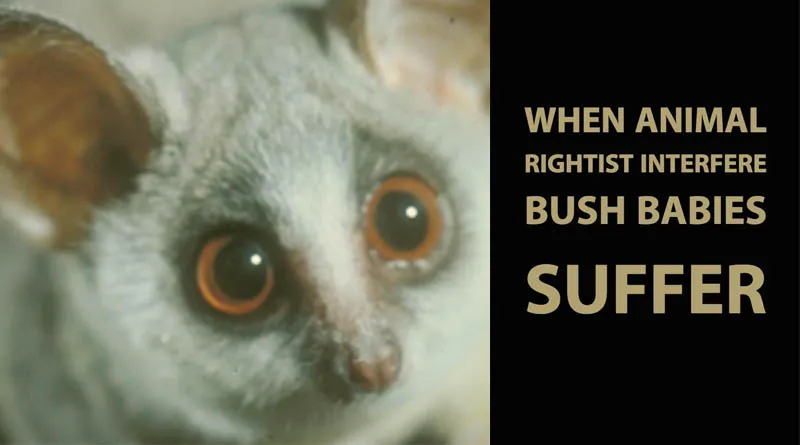
Why are Animal Rightists so Bad for Wildlife?
Because they interfere (often stop) many “best practice” ecosystem management programmes that are essential for the maintenance of wild animals and the vital diversity of African wilderness.
Every wild animal species is adapted to live in a particular kind of habitat. Many species cannot live in any other.
For example, nocturnal bush babies and night apes live in the top canopies of trees in continuous woodland. They move from tree top to tree top all night long – catching their prey and/or eating the sap of particular acacia trees, without ever having to go onto the ground.
They are very vulnerable to predation when they are on the ground – by small predators like jackals, caracals, genets, serval cats, African cats and large mongooses.
When animal rightists interfere and stop elephant population reduction programmes in our national parks, therefore, they become the direct cause of extinction of animals like bush babies and night apes when the elephants destroy their habitats.
Destruction of habitats in our national parks – all kinds of habitats – occurs when excessive elephant populations reduce the numbers of top canopy trees.
Since 1960, for example, the numbers of top canopy trees in Kruger National Park – and the various related habitats associated with climax woodlands – have been reduced by “more than” 95 percent.
In this destruction of the Kruger Park woodlands, the elephant has already extirpated (or are in the process of exterminating) many species of trees; and many complex and essential habitats have already disappeared.
So, you can imagine just how many species of arboreal, woodland and woodland-understory dependent animals have been adversely affected – including a great variety of mammals, reptiles and insects.
Ron Thomson.
CEO. True Green Alliance
Galago moholi South African lesser bushbaby – Photo credit: Gerald Doyle